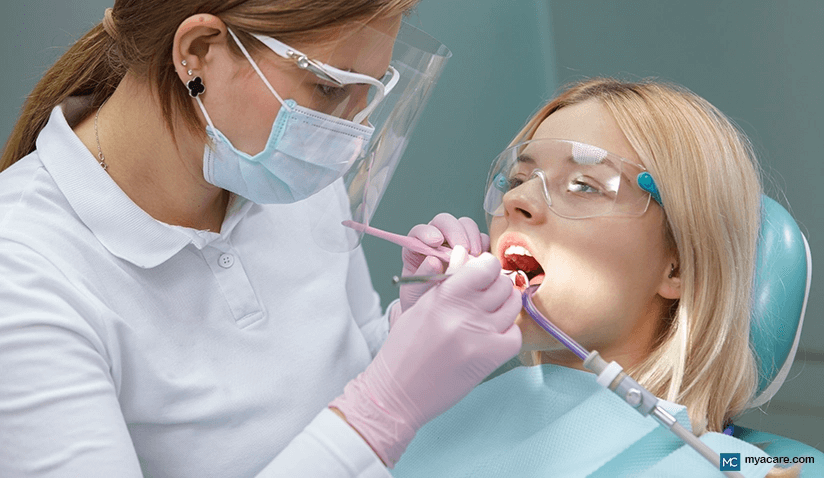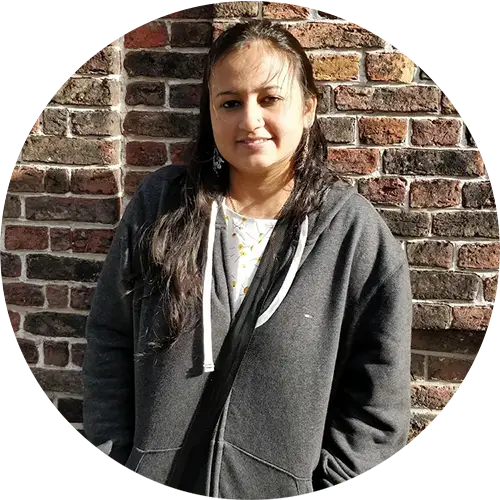How to Visit the Dentist Safely During COVID-19

The outbreak of the COVID-19 pandemic has affected health care facilities globally. Among several healthcare professionals, dentists, dental assistants, and dental hygienists are at high risk of developing the infection. While dental clinics performed only the emergency procedures in the initial days of the outbreak, they are now fully operational in most parts of the world and are taking the necessary precautions. However, individuals are still unsure if it is safe to visit the dentist. Even if they desire to, they are not aware of the measures to ensure a safe visit to the dentist during the pandemic. In this article, we share some pointers you should consider if you are planning to visit the dentist:
Why are Dental Practices Considered High Risk for the Spread of COVID-19?
Dentists work in the patients’ mouth. The possibility of exposure to a splash of an infected patient’s saliva or nasal release is high. The direct transmission of virus is through respiratory droplets, which spread while sneezing, coughing, and talking.
Besides this, equipment used in dental procedures generate aerosols. These aerosols contain the patient’s saliva, blood, debris, and microorganisms. The aerosols generated while working in a COVID-19 patient are likely to contain the virus. Aerosols remain suspended in the air for 3-4 hours and are inhaled by dentists and other patients. Individuals without symptoms or in the incubation period could be unknown carriers of COVID-19 virus and may infect the dentists and other patients.
How Safe is it to Visit a Dentist During COVID-19?
With the implementation of safety protocols, dental visits are much safer than the initial days of COVID-19 outbreak. So far, no transmission of COVID-19 infection has been reported in the dental setting.
Should One Delay a Visit to the Dentist for Elective Treatments?
The short answer is no.
It is not advisable to delay elective treatments any more. Negligence in oral care may have deleterious effects on your health. A prolonged stay at home has encouraged unhealthy eating (e.g., binge eating, intake of sugar-based diet and drinks), and improper, irregular brushing habits. This has caused an increase in teeth decay and gum diseases. It is recommended to visit your dentist for regular oral checkups.
How Does One Determine That a Dental Visit is Safe?
Before a visit to the clinic:
Prior consultation with the dentist over the phone or video calls can help assess the condition. It allows the dentist to focus on the appointments based on the level of need. This avoids long waiting hours, overcrowding of clinics, and unwanted exposure to the clinic’s environment.
Tele screening helps to recognize the potential suspects of COVID-19 infection. Queries on the history of travel, past and present history of symptoms such as cough, cold, fever, and loss of smell help in screening individuals.
Also before going to the clinic, give them a call and ask them what precautions they are taking, and how often staff is tested.
During a visit to the clinic:
- Ensure that you wear a mask as you enter the clinic’s premises.
- Check for the non-contact sanitizer dispenser and clean your hands.
- Use tissue paper to dry the hands instead of towels.
- Read the visual alerts at the entrance and reception area of the clinic. They tell you about hand hygiene, cough etiquette, social distancing, and disposal of used tissues in waste bins.
- As you enter the clinic, ensure that body temperature is recorded using an infrared non-contact forehead thermometer and oxygen saturation in the blood is evaluated using a pulse oximeter.
- Ensure that staff seated at the reception is taking basic precautions such as wearing a mask, disposable gloves, and face shield.
- In individuals with symptoms the dentist may ask to undergo the test for COVID-19. (The appointments of potential suspects may be delayed by 2-3 weeks).
- Check if the distance between the chairs placed in the reception or waiting area is at least 1 meter apart.
- Check if the waiting area is well-ventilated (with fans and exhausts) and located at least 6 feet away from the treatment room.
- Make sure the waiting area isn’t crowded with patients. If you find it crowded then try to take another appointment at a later date.
- Before you enter the treatment room, ensure that the treatment room is disinfected and surfaces are cleaned with chemicals.
- Check if the dentist is following safety protocols such as wearing PPE (personal protective equipment), head cap, face mask (N95, FFP2, or equivalent), and eyewear or face shield.
- Ensure that you are asked to rinse your mouth using mouthwash and a disposable plastic apron is wrapped around you before the checkup.
- Check if single-use, disposable devices (e.g., syringes, mouth mirrors) are used to avoid cross-contamination.
- Make sure post-treatment instructions by the dentist are given after removing the PPE.
- Prefer a mode of payment that does not involve physically touching the currency or card.
The emergence of COVID-19 has brought new challenges and responsibilities to healthcare professionals including dentists. They have adopted several measures such as using rubber dams (thin rubber sheet placed in patient’s mouth, exposing only the teeth of interest) and high-volume suction (which removes aerosols). These changes reduce the risk of splattering of saliva and aerosols to deliver safe oral care during the pandemic. On their part, patients must also follow safety protocols to limit the spread of COVID-19.
To search for the best healthcare providers offering dentistry, please use our search engine. We currently have providers in India, Malaysia, Singapore, Spain, Thailand, Turkey, the UAE, the UK and the United States
To search for the best healthcare providers worldwide, please use the Mya Care search engine.

Dr. Shilpy Bhandari is an experienced dental surgeon, with specialization in periodontics and implantology. She received her graduate and postgraduate education from Rajiv Gandhi University of Health Sciences in India. Besides her private practice, she enjoys writing on medical topics. She is also interested in evidence-based academic writing and has published several articles in international journals.
Sources::
Featured Blogs



